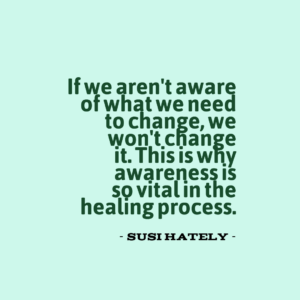By Susi Hately, B.Sc. Kinesiology, C-IAYT Yoga Therapist
People will often ask me why how my clients get out of pain so quickly and how it is that they have a long term relief. Here is a short summary of how I work, my philosophy, and some ideas on how you can apply it for yourself and your students.
One of my key concepts is “where the pain is, is not the problem, rather the pain is a  sign of dysfunction or limitation”. An example of this is SI Joint Pain. So often people will come to me with a sore SI Joint wondering what they can do to relieve it. They have tried all sorts of different techniques which have provided short term gain, but they haven’t had the long term relief they are wanting. I also have teachers asking me, “what exercise or sequence do I use to relieve SI Joint pain?” Well, if you really want long term relief, there isn’t a sequence or exercise to make that happen.
sign of dysfunction or limitation”. An example of this is SI Joint Pain. So often people will come to me with a sore SI Joint wondering what they can do to relieve it. They have tried all sorts of different techniques which have provided short term gain, but they haven’t had the long term relief they are wanting. I also have teachers asking me, “what exercise or sequence do I use to relieve SI Joint pain?” Well, if you really want long term relief, there isn’t a sequence or exercise to make that happen.
Why is this so, what is happening here?
The primary reason that I have seen is that they haven’t addressed the actual dysfunction or limitation. Yes, they may have had their SI Joint and/or lumbar spine adjusted, or they have utilized yoga techniques to “stretch out” a tight muscle associated with the pain (like a tight piriformis), but they haven’t taken a step back and looked at the bigger picture. Why did the SI Joint or piriformis find themselves in a compromising position in the first place? Neither woke up one day and said, I am going to “get locked”, or “become hypermobile” or “get tight”. They were simply responding to how the forces were moving through their body and compensating for them surreptitiously.
 This leads to another one of my key concepts. We can’t change what we aren’t aware of. Much of the time the limitation or dysfunction that is correlated to the pain, resides under the level of awareness. Becoming aware of movement and breath – what is moving well, what isn’t, where there is compensation, and then nurturing that which is working and quieting that which isn’t working. This is the first, second and third step toward improving how forces move through the body and shifting overall body patterns.
This leads to another one of my key concepts. We can’t change what we aren’t aware of. Much of the time the limitation or dysfunction that is correlated to the pain, resides under the level of awareness. Becoming aware of movement and breath – what is moving well, what isn’t, where there is compensation, and then nurturing that which is working and quieting that which isn’t working. This is the first, second and third step toward improving how forces move through the body and shifting overall body patterns.
A third key concept is I tend to not focus on alignment. Rather I focus on good movement. I find that many people can compensate their way to alignment which often creates more tension, tightness and unease. I prefer to support someone to move well, in a range that offers ease and less pain, tension and strain since I find when I provide that sort of input the neuromuscular system responds more quickly with greater ease, softness, strength and much less pain.
So how do you apply this in your day-to-day practice and teaching:
1. Find someone who can watch you move, and has a keen eye and understanding for what is supposed to be moving in asana, and daily activity. Determine if you actually have the functional capability to do what the activity is asking you to do. Many people often discover they don’t have the movement ability to cycle or run, or to do triangle pose. This doesn’t mean they never will. It just means they don’t have the capability right now. And, when they gain that movement ability they will be able to do that which they want to do.
2. Be aware of what is driving you in your practice. What is really bringing you to your mat, and moving you into your poses? Recognize what your breath is doing even before you start. Do you automatically go into a deep Ujjayi breath? Is it easeful or is it tension building?
3. Practice in a range of motion that doesn’t increase your pain, strain, ache or levels of tension. Remember, Asana is all about “sitting comfortably and still”.
4. Remember, that your body is pretty plastic amazing and adaptive – it responds to stimulus and when you give it the input it needs, or is quietly asking for, it will respond in ways that will blow your mind.
Best,
Susi
